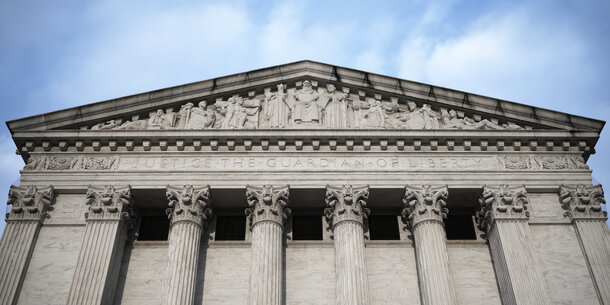Update: On September 26, the Supreme Court rejected Alabama’s efforts to halt the redrawing of the state’s congressional map by a court-appointed special master.
Redistricting often has twists and turns but rarely ones as wild as those that have played out in dramatic fashion over the course of the summer in Alabama.
The Alabama saga begins in early 2022, when a federal district court struck down the state’s congressional map, ruling that the district lines adopted by lawmakers based on the 2020 census ran afoul of the Voting Rights Act.
The voided map severely fractured Black voters among multiple districts. As a result, Black Alabamians, who have grown to now make up almost 30 percent of the population, could elect their preferred candidates in only one of seven of the state’s congressional districts.
In each of the state’s other six districts, the Black population, no matter how hard it tried, was simply too small to overcome the hard-edged reality of Alabama’s starkly racially polarized politics. Six decades after the civil rights movement of the 1960s, an enduring fact of Alabama politics is that white and Black voters still overwhelmingly support different candidates up and down the ballot, especially when a contest includes a Black candidate. This polarization of voting along racial lines, which is most extreme in rural regions like the state’s Black Belt, makes it easy to lock Black voters out of power depending on how district boundaries are drawn, whether inadvertently or intentionally.
To fix the map’s illegal dilution of Black political influence, the three-judge panel ordered Alabama to create a second congressional district “in which Black voters either comprise a voting-age majority or something quite close to it.”
Alabama appealed to the Supreme Court, which blocked the decision from going into effect for the 2022 election. But in June, after arguments in the case, Chief Justice John Roberts handed down a 5–4 opinion not only upholding the trial court’s ruling in full but robustly reaffirming the nearly 40-year-old framework for deciding similar cases under Section 2 of the Voting Rights Act.
The directive to Alabama was unambiguous: Create a second congressional district where Black voters have a fair shot at electoral success. But what happened next was head spinning.
Rather than create a second district with Black majority or “something quite close to it,” as the district court had instructed, lawmakers passed a map that merely increased the Black percentage of one white majority district to 40 percent — a level still far too low to give Black-preferred candidates any chance of prevailing at the ballot box given the state’s racially polarized politics. Black-preferred candidates would still routinely lose by double digits in the new district.
In a hearing on the new map, lawmakers openly admitted that their map would not create any new political opportunities for Black voters. But they defended it by retreading arguments already rejected by courts, saying that complying with the order would illegally prioritize race above other policy considerations, such as keeping the state’s Gulf Coast counties together in the same district.
Needless to say, the district court was not amused. On September 5, the three-judge court issued a 217-page order painstakingly re-rejecting the state’s arguments one by one and blocking use of the new map. The court said it was “deeply troubled that the State enacted a map that the State readily admits does not provide the remedy we said federal law requires,” adding that it was unaware of any other Voting Rights Act case where a state had so openly defied a court order. The law, the court said, “requires the creation of a district that affords Black Alabamians, like everyone else, a fair and reasonable opportunity to elect candidates of their choice. The 2023 Plan plainly fails to do so.”
By order of the court, responsibility for redrawing the map now moves to a court-appointed special master, who has until September 25 to propose three alternative maps for the court’s consideration. The parties then will have three days to submit comments and objections to the maps, with a court hearing on objections on October 3. An order adopting a court-approved remedial map should follow shortly, just in time for the 2024 election cycle.
But Alabama officials aren’t going gently into the night. Parallel to the redrawing of the map, Alabama is pursuing yet another appeal to the Supreme Court. An appeal challenging the remedial map adopted by the court is also likely. More critically, Alabama will again be asking the Supreme Court to put the three-judge panel’s ruling, and any new map, on hold pending resolution of appeals. If granted, that would leave the invalidated map in place for 2024, making for two elections in a row where Black Alabamians vote under maps ruled to be racially discriminatory by federal courts.
After a string of remarkable victories, Black voters in Alabama are closer than ever to winning relief from discriminatory maps. But alas, as unfortunately is often the case in redistricting litigation, there are more rounds to go before we know if that relief will come in time for the 2024 election or whether justice will be delayed yet again.






